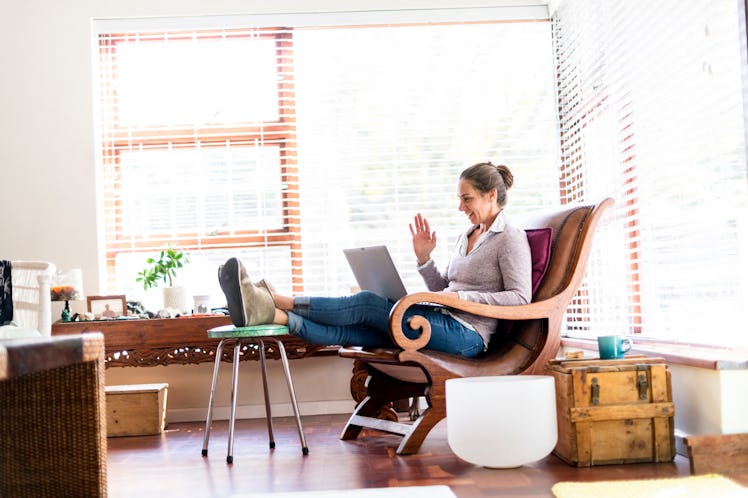
You Can Easily Record & Save Your Zoom Video Calls With These 2 Options
One of the best features about Zoom virtual conference calls is the ability to capture your online meetings to re-watch for reference later. All accounts have some capacity to record, but the process will look a little bit different depending on whether you have a free or paid account. Without further ado, here's how to record Zoom meetings and share them with your entire team.
How you choose to capture your conference call depends on whether you want to do a local recording or a cloud recording. Local recordings are available for both free and paid accounts, and basically allow both administrators and participants to easily record their meetings and save the files to their computer or upload it to a streaming or storage platform. However, mobile device users don't have access to the local recording functionality, so you'll want to check out cloud recordings if you're an iOS or Android user and prefer to take your Zoom calls on your smartphone.
Cloud recordings, which are automatically available for paying customers (Pro, Business, or Enterprise accounts), allow the host to record meetings and save the the video, audio, and text files to an online cloud storage area. Keep in mind that there are storage limits for each account (in most cases, 1 GB of space) and you'll have to pay more for going over your set storage amount. However, you will have a lot more options for changing formatting during your recordings, as well as the ability to add timestamps, show the people’s names in the video, and transcribe your recordings. Each option comes with its own pros and cons, so you'll want to check out what each method has to offer before making your final decision.
How to do a local recording
To start, you'll need to make sure that you have at least version 2.0 of Zoom Desktop Client for Windows, macOS, or Linux. Once you sign in, you'll either head to My Meeting Settings or Meetings Settings depending on if you’re an administrator or an account member, and then select the Recording tab. From there, you should see the Local Recording button and the option to toggle it off or on.
Administrators can also manage these settings at a group level by clicking Group Management and then tapping Settings for your unique group. Once you see the Recording tab, you’ll be able to go to the Local Recording button and choose to turn it off or on for the entire group.
When you're ready to start recording, hosts and participants who've been granted permission to capture the meeting will see a Record button at the bottom of the Zoom call and the option to "Record On This Computer." Once you hit the record button, participants and the host will see a message letting them know that the meeting is currently being recorded. You can stop or pause the recording at any time, but keep in mind that doing so will create a separate video or audio file at the end of the call. When your video call is finished, you'll get a message that Zoom is converting your conference call and a pop-up window will come up with the mp4 recording. You can then convert the audio file to a video recording by clicking "convert."
How to do a cloud recording
If you want to do a cloud recording, the process is pretty similar. Just like for local recordings, administrators and participants can head to the Settings tab to find the Recording function, where they'll be able to see if they have the cloud recording setting and turn it off or on.
Only hosts and co-hosts have the ability to start a recording, and all recordings made will be saved to the host's Zoom web portal. Just like with the local recordings, you'll see the Record button at the bottom of the screen when you start your video conference. You can then opt to Record to the Cloud, and can stop, pause, or end the recording at any time. You can also transcribe your meeting to save a text of it to the cloud by checking off "Audio Transcript" in the Cloud Recording settings. Once it's done, the host will get an email letting him or her know that the recording has been processed along with a link to the finished product.